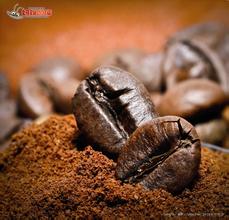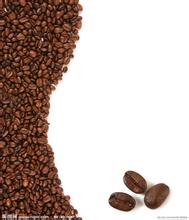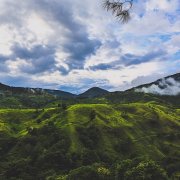Classification of coffee bean industry
A cup of coffee from the producing area to the consumer has to go through a long and complex industrial chain.
. A pound of green coffee beans sells for 6.4 yuan in the producing country, and when shipped to the United States, the retail price is 24 yuan per pound. One pound of coffee beans can be ground into 35 cups of coffee, calculated at a minimum retail price of 12 yuan per cup. In the terminal retail sector, coffee can be sold for 420 yuan per pound. What makes the price of this crop increase by as much as 66 times from farm to end consumption? This is closely related to the culture and trade of coffee itself.
Classified editing
Application layer
1. International coffee materials and alcoholic beverages
Include: coffee beans, coffee powder, coffee companion, instant coffee, cream, cream, seasoning syrup, beverages, food, seasoning, food additives, food ingredients, dried fruit, expanded food, coffee, coffee sauce, coffee slices, coffee chocolate, coffee beverages, pastries, coffee milk, coffee sugar, spirits, beer, wine, rice wine, health wine, whisky, brandy, sweet wine, fruit wine, wine raw materials, Alcoholic beverages, other types of alcohol, etc.
Physical layer
1. International coffee and wine cups
Including: coffee filter paper, coffee bar, coffee can, coffee pot, coffee table, coffee spoon, coffee blender and coffee brewing utensils, coffee cups, coffee plates, personality porcelain, wine sets, utensils and so on.
two。 Mechanical equipment of international coffee bar
Including: various coffee machines, coffee vending machines, steam coffee machines, espresso machines, ice drop coffee machines, coffee barbecue grinding equipment, various coffee grinders, special coffee stoves, various coffee pots, various coffee utensils, coffee gift boxes, coffee machine front water purification device, refrigerator, ice crusher, ice granulator, snow machine, ice cream machine, frost machine, freezer Processing, inspection, packaging, storage and transportation equipment and technical support Food processing, packaging machinery, packaging materials, coffee bean processing equipment, coffee bean shelling equipment, coffee bean enucleation equipment, coffee bean cleaning equipment and grading equipment, coffee bean grinder, coffee bean polishing equipment, coffee bean barbecue machine, coffee beater, coffee brewing equipment, coffee screening machine, coating equipment, freeze-drying equipment, coffee powder processing equipment, coffee essence spraying and drying equipment, decaffeinated equipment, etc.
Coffee industry chain, formerly known as Siyi, is a collection of enterprises in the whole coffee industry. Industrial chain is the path from one or more resources to downstream industries through several industrial levels to reach consumers. It contains four meanings: first, industrial chain is the expression of industrial level. Second, the industrial chain is the expression of the degree of industrial relevance. The stronger the industrial relevance is, the closer the chain is, and the higher the efficiency of resource allocation is. Third, the industrial chain is the expression of the depth of resource processing. The longer the industrial chain, the deeper the processing can be achieved. Fourth, the industrial chain is the expression of the degree of meeting the demand. The industrial chain begins with natural resources and ends in the consumer market, but the starting point and end point are not fixed.

Important Notice :
前街咖啡 FrontStreet Coffee has moved to new addredd:
FrontStreet Coffee Address: 315,Donghua East Road,GuangZhou
Tel:020 38364473
- Prev

Papua New Guinea Coffee Flavor Taste Characteristics
Papua New Guinea coffee flavor characteristics: full particles, moderate acidity, mellow taste. Papua New Guinea is an island country in Oceania. Papua has curly hair in Malay. It is said that in 1545, the explorer Leites arrived on the island and found that most of the hair on the island was curly, that is, the island was called the island of curly hair, so it was called this name.
- Next

Discussion on the brewing method and technology of fine coffee
The term "fine coffee" was first put forward by Ms. Knudsen of the United States in Coffee and Tea magazine. At that time, Ms. Knudsen, as a coffee buyer at B.C. Ireland in San Francisco, was very dissatisfied with the neglect of the quality of raw coffee in the industry, and even some big roasters mixed a large amount of Robesda beans in the comprehensive beans, so she put forward the concept of fine coffee.
Related
- Beginners will see the "Coffee pull flower" guide!
- What is the difference between ice blog purified milk and ordinary milk coffee?
- Why is the Philippines the largest producer of crops in Liberia?
- For coffee extraction, should the fine powder be retained?
- How does extracted espresso fill pressed powder? How much strength does it take to press the powder?
- How to make jasmine cold extract coffee? Is the jasmine + latte good?
- Will this little toy really make the coffee taste better? How does Lily Drip affect coffee extraction?
- Will the action of slapping the filter cup also affect coffee extraction?
- What's the difference between powder-to-water ratio and powder-to-liquid ratio?
- What is the Ethiopian local species? What does it have to do with Heirloom native species?

